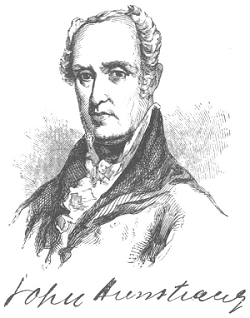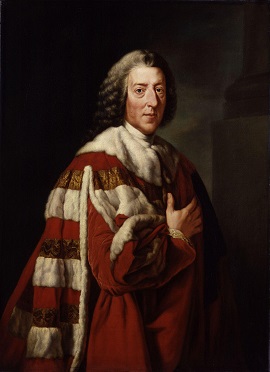Who Served Here?
John Armstrong:
IMPORTANT NOTE: Armstrong served with Washington before and after Valley Forge, but was not present at the winter encampment. He is included for the use of people interested in his contributions to the United States.

Major General John Armstrong Sr
from Pictorial Field Book of the Revolution, Vol. I
Benson J. Lossing, 1850
John Armstrong was born October 13, 1717 in Brookborough Parish, Fermanaugh County, Ireland. He was among the many settlers of Cumberland County, Pennsylvania, and came to be one of the most capable surveyors along the frontier.
In 1756, Armstrong was appointed by Pennsylvania to head an expedition against Kittaning, a Delaware (Lenape) and Shawnee stronghold on the Allegheny River, in what would be one of the first battles of the French and Indian War. Before Colonel Armstrong left Carlisle, he wrote to the Governor of Pennsylvania:
Colonel Armstrong gathered his army of three hundred at Fort Shirley on the Juniata in August, 1756, and by rapid marching came within six miles of Kittaning on September 7. The next morning, Armstorng and his troops mounted a massive surprise attack, destroying the village and slaughtering many of the inhabitants. After the destruction of Kittaning, many of the settlers moved back to their homes. Armstrong was wounded in the battle, but the "hero of Kittaning" fully recovered, and received a commendation from Philadelphia on January 5, 1757:
To Col. John Armstrong: Sir: The corporation of the city of Philadelphia greatly approve your conduct and public spirit in the late expedition against the town of Kittanning, and are highly pleased with the signal proofs of courage and personal bravery given by you and the officers under your command in demolishing that place. I am, therefore, ordered to return you and them the thanks of the Board for the eminent service you have thereby done your country. I am also ordered by the corporation to present you, out of their small public stock, with a piece of plate and silver medal, and each of your officers with a medal and a small sum of money, to be disposed of in a manner most agreeable to them; which the Board desire you will accept as a testimony of the regard they have for your merit. Signed by order, January 5, 1757. ATWOOD SHUTE, Mayor.
After the expedition the chiefs of 13 native tribes signed the Treaty of Easton, in which the natives agreed not to fight on the side of the French in the ongoing war, in return for the British returning land to them.
Later in 1757, Colonel Armstrong was placed in command of a force of 2,600 by Pennsylvania to follow through with plans by William Pitt, the leader of the House of Commons in the British Parliament, to wrest control of western Pennsylvania from the French. The French were in control of Fort Duquesne located in the western part of the state. British Officer, General John Forbes, was given complete command of the expedition against Fort Duquesne. Serving beneath him, a young Colonel George Washington was in command of the colonial troops from Virginia and Maryland. The Pennsylvania troops met at Raystown (Bedford), Pennsylvania to plan their attack, during which Armstrong and Washington became good friends.
The expeditionary forces numbered about six thousand, of which sixteen hundred were British regulars. The British constructed a road between Raystown and their target, Fort Duquesne, stopping at an outpost named Loyalhanna, about fifty miles from the Fort. In November of 1758, Forbes marched against the stronghold, but the French set fire to it and marched away before the English could attack. The capture of the fort virtually ended the struggle in Pennsylvania. Forbes changed the name from Duquesne to Fort Pitt, and Armstrong raised the flag. Forbes died a year later in Philadelphia after retiring from service.
Colonel Armstrong continued service with the military until the end of the French and Indian War in 1763 and in subsequent struggles later. He also served as a Judge of Court of Common Pleas for many years.




